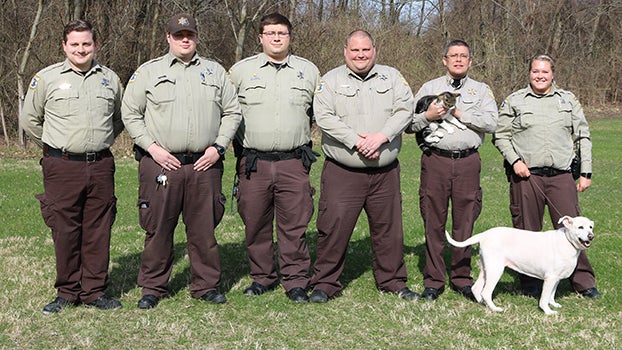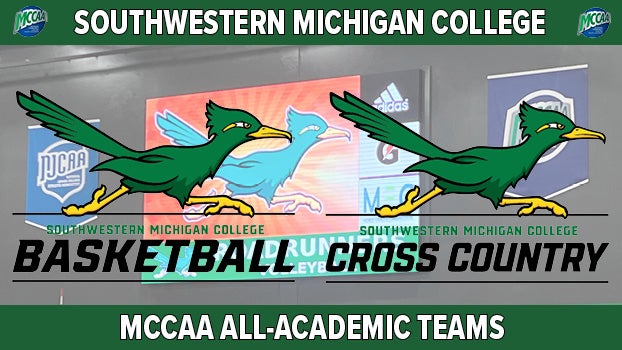Cass County Animal Control sees increase in save rate, adoptions amid COVID-19
Published 4:26 pm Monday, July 20, 2020

- Cass County Animal Control officers, pictured left to right: Kirk Graham, Matt Dodd, Robert Jackson, Dustin Bates, Director Ronald Butts with Ewok and Abigail McKeel with Angel. (Leader photo/ ANGIE MARCINIAK)
|
Getting your Trinity Audio player ready...
|
CASSOPOLIS — Though the COVID-19 pandemic has hindered many, it is helping Cass County animals find new homes — saving their lives in the process.
The Cass County Animal Control recently reported its current save rate is 94.3 percent, up from 85.7 percent in 2019 and 40.9 percent in 2018. A 90 percent save rate gives a shelter “no-kill” status, which means animals are either returned to owners, transferred to other shelters and rescue organizations, or adopted. Euthanasia is used only when an animal is suffering from a medical or behavioral condition that is irreparable.
According to Cass County Animal Control Director Ronald Butts, an increase in animal transfer partners has helped the shelter place more animals. The shelter currently has 19 transfer partners.
“For a municipal shelter in this area, that’s huge,” Butts said. “When the shutdown started, we were getting email inquiries about the pets in our shelter. Pets have become bonafide family members. With our programs and expanding transfer partners, we’re working with these different groups and we’ve been able to increase our save rate.”
Butts is proud of the save rate but also knows that the shelter must be prepared to deal with animals that are a danger to the community if necessary.
“One of our primary tasks is to protect the public,” Butts said. If an animal has extreme behavior that isn’t correctable, we have to step in. We have to look out for the community. With the partnerships we have in place, hopefully, we can avoid those scenarios. We don’t have to have that problem.”
Pet adoptions — a key factor in Cass County Animal Control’s high save rate — have increased this year.
“We have seen an uptick,” Butts said. “We only have a few pets for selection right now. Residents that are staying home have more time to dedicate toward raising a pet. The community has come together and has offered to help us out with supplies and adoptions. That’s been a great surprise.”
Though the COVID-19 pandemic initially closed the inside of the shelter to the public, curbside adoption service began during the first week of May. The shelter scheduled the curbside appointments in 60-minute blocks, with a tent set up with social distancing practices in place. Prospective owners would wait at the tent and the pet was brought out to them, which allowed them to make the decision.
During the first week of curbside adoptions, the shelter placed 21 animals.
“Individuals could go outside and still be following the Stay at Home order,” Butts said. “We thought to ourselves, ‘Why can’t we do something like curbside adoptions?’ So we put together a plan, and the first week of May started curbside adoptions. The pandemic has given us more of a chance to think outside the box.”
Now, the shelter has reopened to the public, and Butts hopes to see the trends of adoptions and increased save rates continue.
Animal control currently operates from 11 a.m. to 5 p.m. from Monday to Friday.
“We’re trying to keep things status quo,” Butts said. “We’ve shortened hours to accommodate cleaning. We’re more than happy to schedule appointments.”






